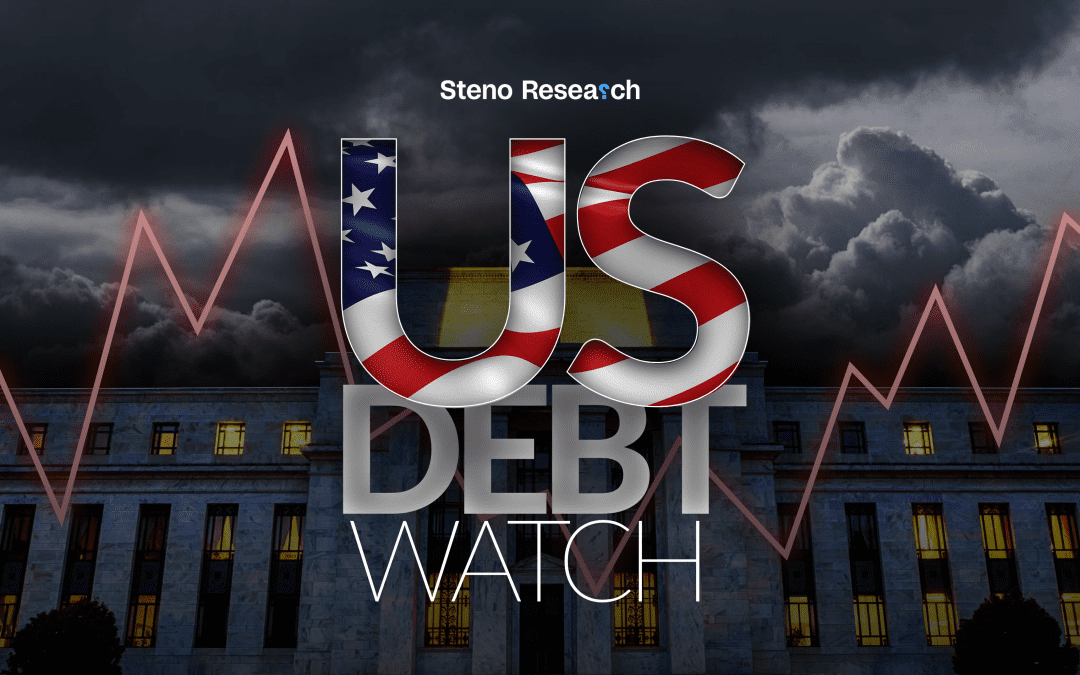Reevaluating the San Francisco Fed’s Assumptions on Household Savings Rates


Reevaluating the San Francisco Fed’s Assumptions on Household Savings Rates

The curve has bear steepened for a couple of days and while it may be tempting to blame an upcoming Trump presidency, the explanation can also be linked to the business cycle. Will Powell re-open the insurance cut door today?

The annual ECB conference at Sintra is a strong forum for signaling a coordinated central bank direction. This year, the conference takes place amidst weak US economic surprises, with the Fed perceived as the most dovish central bank for 2025.

It seems like old hat to discuss the weakness in labor markets as the cyclical vibes are getting stronger out of the high-beta economies globally. Will the US cycle follow suit?

We are off to a flying start in our bets on the US consumer. We consider the “excess savings depletion” narrative vastly overcooked, and find the playing field to have changed leaving consumption solid in the month(s) ahead.

The first strong hints of the economic performance in June will be out already on Monday, but the Chicago PMI later today will offer important clues.

There is a solid risk/reward in betting on a hawkish surprise to the European HICP numbers in June as the market consensus is soft. Beneath the hood, some of the forward-looking indicators show signs of continued disinflation.

Markets await further action from the Asian monetary authorities with both JPY and CNY in the intervention zone again. In contrast to earlier rounds of intervention, we are much less certain that precious metals will thrive.

The JPY is once again suffering from a weak CNY, and the metals trade is not performing despite FX debasement risks in Asia. Have markets gotten tired of the co-ordinated “cry wolf” rhetoric from Asian monetary authorities?

Hawkish surprises from Sweden, Canada and Australia. Is this something to worry about for the bond bulls in G3 markets as well? We tend to think so. Meanwhile, liquidity proxies rebound despite quarter-turn drains.

The debate on whether this is a Burns or a Volcker-like scenario rages on, but re-inflationary forward-looking indicators are increasingly coming to light. This is particularly evident in countries that have already cut interest rates.

While Nvidia is suddenly selling off due to liquidity (and idiosyncratic reasons), there are signs of re-inflation outside of the US, which could impact the USD market versus RoW currencies.

Is it time to bet against the USD based on relative surprises and relative inflation numbers? The week ahead is full of interesting inflation data.

Recession chasing has become an obsession for many, but how can we use the current bankruptcy trend to trade the macro cycle in a clever way? Here are the findings from our bankruptcy studies.

The US exceptionalism was once again solidified with the release of the PMI numbers. While we don’t find a lot of forward-looking signal value in S&P PMIs, it’s still fair to ask whether the slowdown is even happening.

Data for May looked weak across all construction categories in the US, but it is important to note that the weather may have played a major role in this weakness. Meanwhile, there are signs of a rebounding European/UK consumer market.

We are not miles from the needed threshold level of USD reserves in the system and the Fed is aware of that. This is a strong reason to believe that liquidity conditions will remain benign from here on a trend basis.

Markets have been choppy with the Americans away from their desks due to Juneteenth. Are commodity bulls punching in thin air ahead of July? Meanwhile, we have a big day ahead in central banking.

The Chinese apparent copper consumption is absolutely on the floor, while the copper market is turning bid again. Is the Chinese consensus getting too upbeat again? And how will it market in the West during the summer?

The net developments in Norges Bank rate path model suggest that Norges Bank will remain patient. Not much has changed since March. This is net hawkish relative to market expectations.

Another smoking hot UK services report has emerged, presenting a renewed headache for the BoE. Without the deflation in goods, the BoE would be in a significant mess. Meanwhile, metals markets are heating up again.

The US retail sales will likely make for upbeat spending reading right as the spending cycle is starting to improve outside of the US as well with upwards revisions in Germany.

We see a strong risk environment in July and the spending patterns could pick up again underpinning the “laggard” case in equity space. Find out which one here..

Will the UK Service inflation finally soften? The consensus once again hopes that service prices will de-accelerate in the UK, while Le Pen is trying to pour oil on troubled waters in French fixed income.

While the rate of change is turning bearish on growth- and inflation, we may (temporarily) end up in a goldilocks scenario in July. Bonds tend to perform alongside equities in such a scenario. Buy risk and head for the summer cottage?

The French election risks leave Europe uninvestable from an equity perspective for now, which leaves opportunities ahead in USD markets. We continue to see strong performance in USD liquidity sensitive trades paired with softness in commodities.

The balance of risks move in the direction of a goldilocksly environment into July, which is at odds with our medium term goods re-inflation narrative. Liquidity and growth will likely improve in July, while commodities could suffer further.

More macro positivity after the month of May with both ups and downs in data print. The tide is turning on a couple of the major inputs in our Macro Regime model.

Despite a hawkish revision of the FOMC projections, the market can take comfort in a solidified cutting bias despite these changes. There is now even a feasible path to dovish surprises relative to the inflation base case.

We are still observing China’s next moves in the copper market, as inventories at Chinese exchanges are booming while they are running low in the West. Meanwhile, our studies reveal that the physical demand in China is absolutely on the floor!